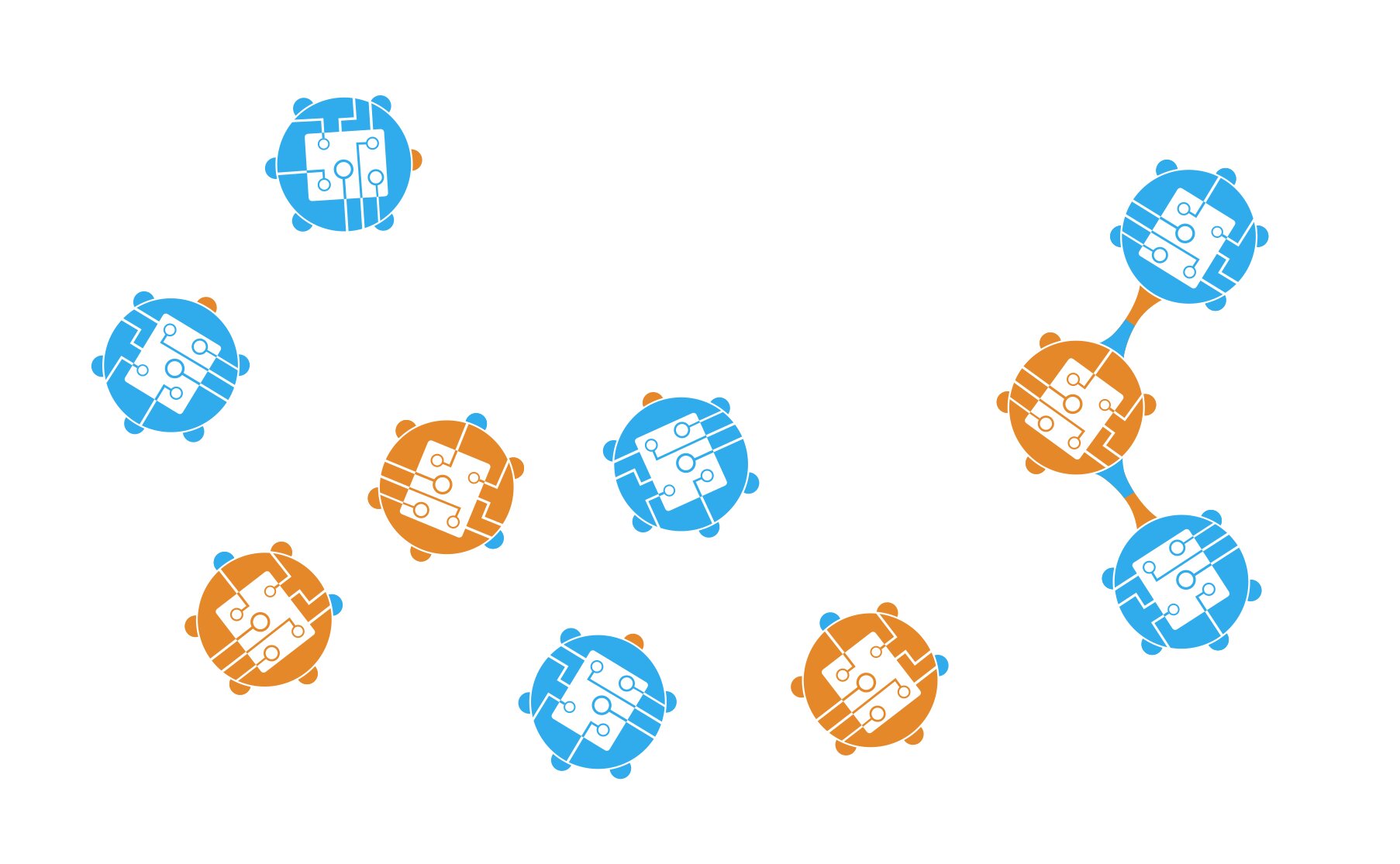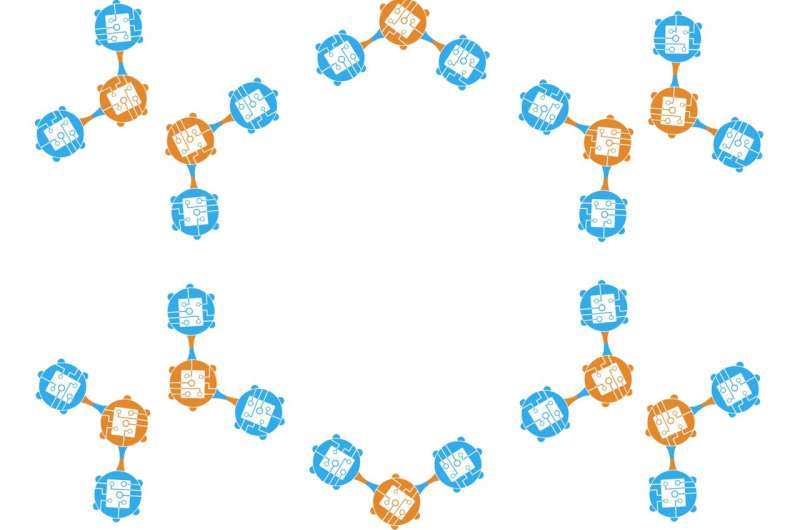
MOBLOT: A theoretical model that describes molecular oblivious robots

Research focusing on swarm robotics typically uses theoretical approaches to describe robotic systems in an abstract way. A theoretical model that is often used in robotics studies is OBLOT, an approach that represents robots as simple systems, all identical, without a memory and unable to communicate with each other.
Researchers at University of L’Aquila and University of Perugia in Italy recently created MOBLOT, an extension of the OBLOT model that can be applied to a broader range of swarm robotics systems. This new model, presented at the 20th International Conference on Autonomous Agents and Multiagent Systems (AAMAS 2021), is inspired by the ways in which atoms naturally arrange themselves to form matter.
“MOBLOT is a new model in the context of theoretical swarm robotics,” Alfredo Navarra, one of the researchers who carried out the study, told TechXplore. “The acronym stands for Molecular OBLivious robOTs, since the inspiration comes from nature: Like atoms combining themselves to form molecules, in MOBLOT, simple (and very weak) robots can move to form more complex computational units (which are also called molecules in the model), having an extent and different capabilities with respect to robots.”
Once formed, molecular robots can arrange themselves into any shape based on specific compositional properties, forming a robotic “matter.” After forming a given shape, if presented with other inputs or stimuli, the molecules can automatically rearrange (i.e., self-reconfigure) their positions to change this shape.
“Basically, we were looking for a model inspired by nature that is sufficiently general to govern the behavior of robot swarms, composable into more powerful entities (i.e., the molecules),” Navarra explained. “Our end goal is to model a robotic matter that can change shape algorithmically. So far, no such a theoretical model has been considered.”

MOBLOT is a general theoretical model that could be used in other studies focusing on swarm robotics. However, it was originally designed with “weak” robots in mind, those with very limited capabilities (e.g., without a memory or that cannot communicate with each other). Navarra and his colleagues specifically focused on “weak” robotic systems because they hoped that their model and the algorithms associated with it would be applicable to a large variety of existing, emerging and newly developed robots.
“The main characteristic that makes it unique concerns the ability of the robots to combine themselves into molecules (a structured subset of robots) that, once formed, acquire new capabilities,” Navarra said. “A molecule is in fact considered as a unique entity with a specific extent and motion properties. This aims to ‘add some power’ to the model, i.e., there are some tasks that are unsolvable if no molecules are formed.”
Compared to the OBLOT model and other swarm robotics approaches, the MOBLOT model can be applied across a broader range of scenarios in which the symmetry of a robot swarm formation is broken. Essentially, the model formalizes the behavior of very simple robots that can aggregate to form more complex robotic structures (the “molecules”), which in turn may form different kinds of final compounds (the “matter”).
In a series of preliminary tests, Navarra and his colleagues showed that by representing robots as units forming molecules, MOBLOT could help to solve the so-called matter formation problem. In the future, the model could potentially also be used to explore other scientific and robotics problems.
In addition, this new theoretical model could inspire other teams to develop robots with compositional characteristics that resemble those of the robotic systems it describes. Navarra and his colleagues would like to explore this possibility further by initiating collaborations with other engineers and roboticists. Meanwhile, they also plan to expand on their model by considering the different environments that robots might navigate in.
“So far, MOBLOT concerns robots moving on the Euclidean plane,” Navarra explained. “In this continuous environment, the robots are assumed to be able to execute accurate movements in any direction and by any amount, even by infinitesimally small amounts. However, for robots with weak mechanical capabilities, it may not be possible to execute such intricate movements with precision; thus, we are currently investigating the consequences of letting robots move in a grid-based terrain, where the movements are restricted only along grid lines and only to a neighboring grid point in each step.”
Researchers develop a robotic guide dog to assist blind individuals
MOBLOT: Molecular Oblivious Robots. Proceedings of the 20th International Conference on Autonomous Agents and Multiagent Systems (AMAAS 2021) (2021). dl.acm.org/doi/abs/10.5555/3463952.3463998
© 2021 Science X Network
Citation:
MOBLOT: A theoretical model that describes molecular oblivious robots (2021, May 19)
retrieved 19 May 2021
from https://techxplore.com/news/2021-05-moblot-theoretical-molecular-oblivious-robots.html
This document is subject to copyright. Apart from any fair dealing for the purpose of private study or research, no
part may be reproduced without the written permission. The content is provided for information purposes only.
Stay connected with us on social media platform for instant update click here to join our Twitter, & Facebook
We are now on Telegram. Click here to join our channel (@TechiUpdate) and stay updated with the latest Technology headlines.
For all the latest Technology News Click Here
For the latest news and updates, follow us on Google News.

